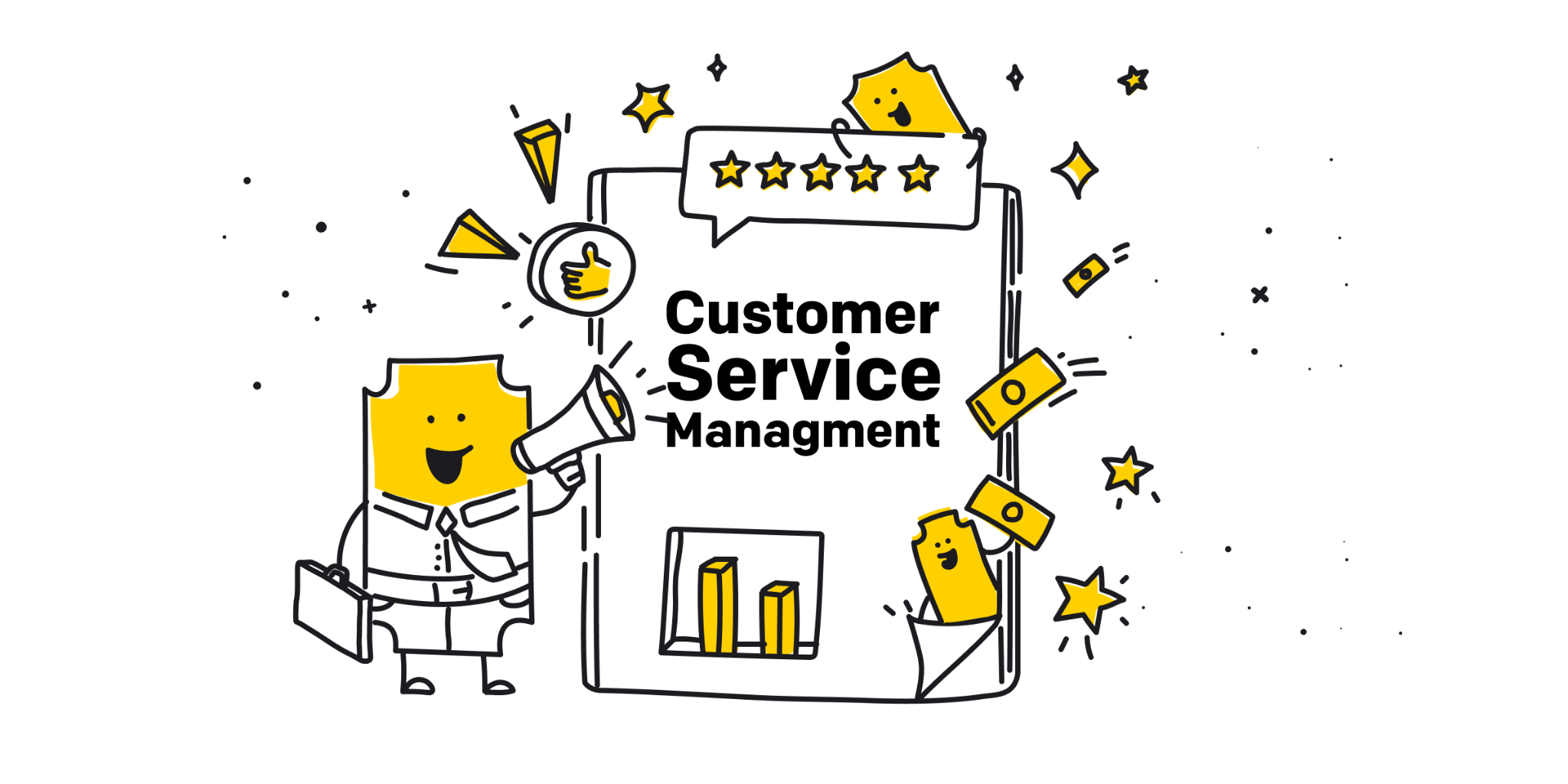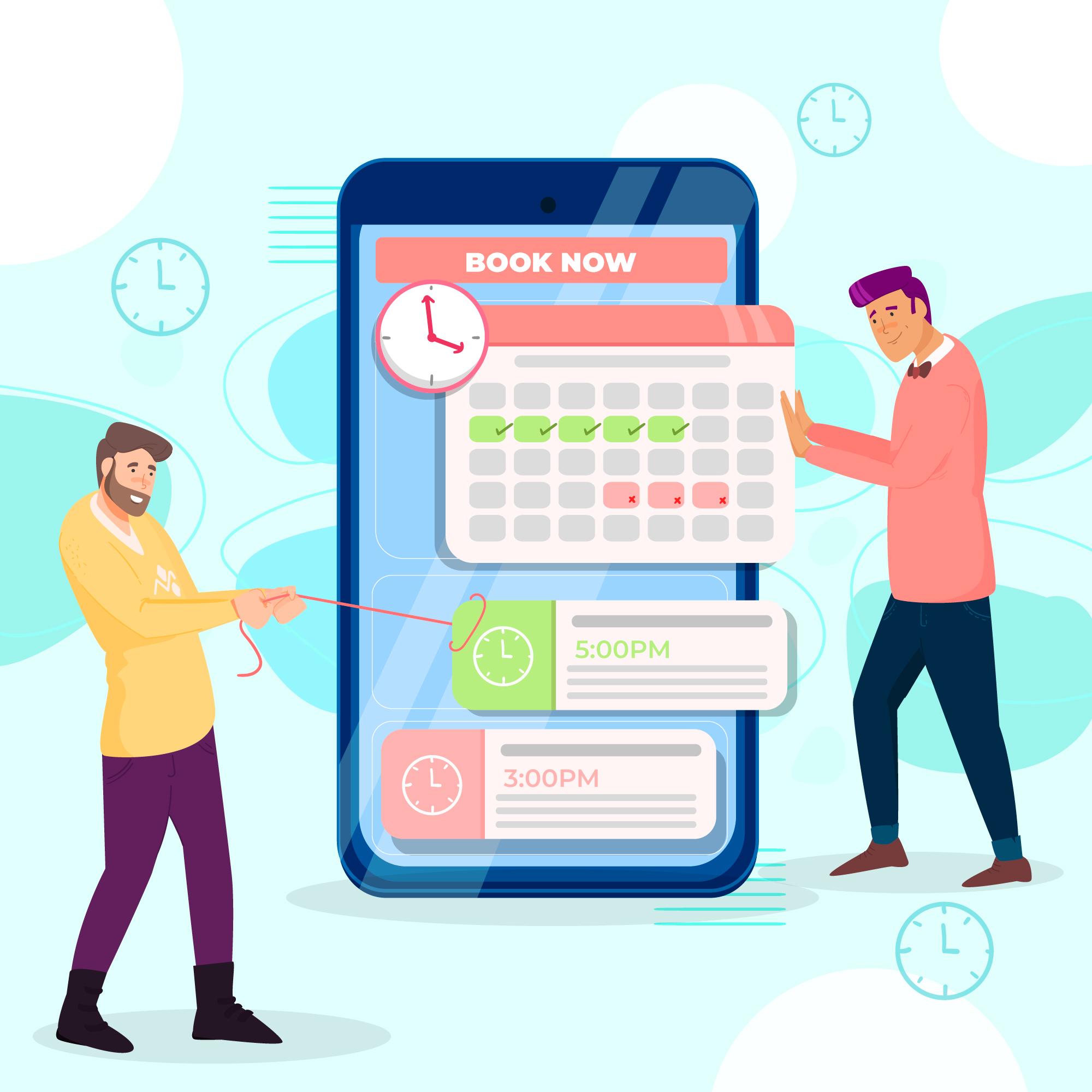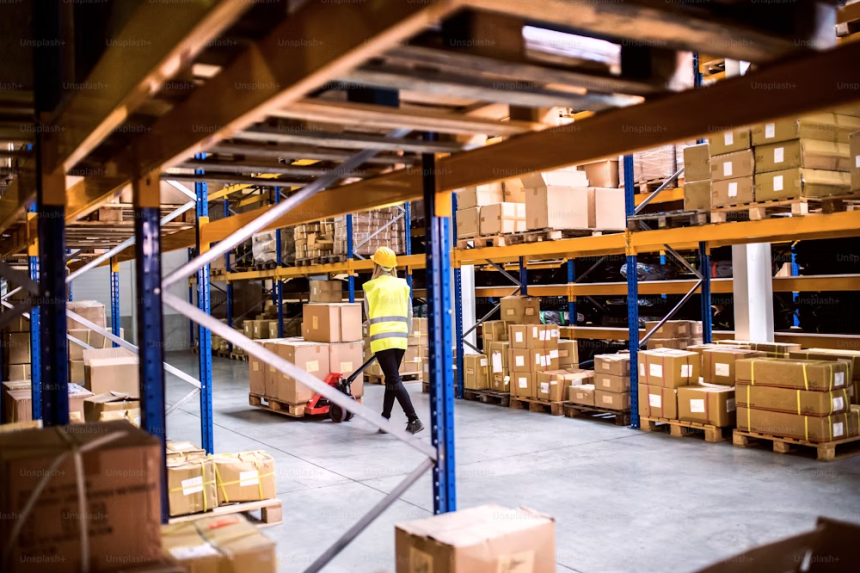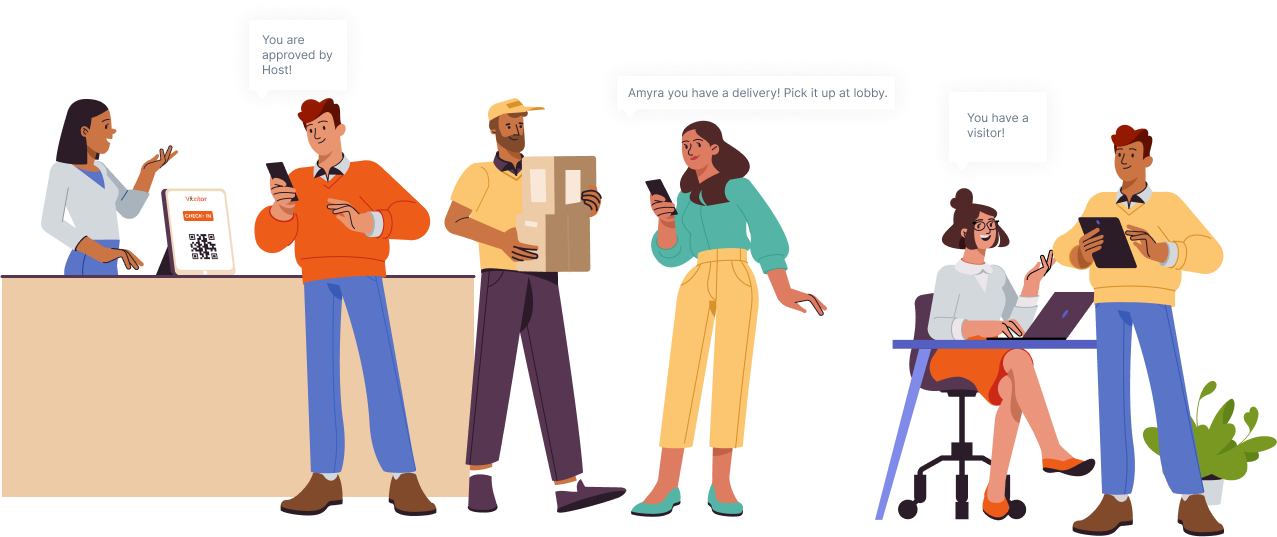Table of Content
Try Vizitor for Free!

Mon, May 13, 2024
Read in 11 minutes
Ever stepped into a store only to turn around because of long lines or an overcrowded space? You’re not alone. Studies reveal that a whopping 66% of consumers say their in-store experience significantly shapes how they perceive a brand (Emplifi). This highlights just how essential it is to manage walk-in traffic effectively.
Why Walk-In Traffic Management Matters
1. First Impressions Count
Your store layout, staff efficiency, and waiting times often create a customer’s first impression of your brand. Long lines or overcrowded spaces can make customers feel undervalued and frustrated, leading to lost sales and negative word-of-mouth.
2. Direct Impact on Revenue
A poorly managed in-store experience can drive potential buyers away, directly impacting sales. On the other hand, a smooth and well-organized shopping journey encourages impulse purchases and repeat visits, boosting revenue.
3. Customer Loyalty Hinges on Experience
Today’s shoppers expect more than just good products—they want seamless experiences. A brand that prioritizes customer comfort and convenience stands out in a competitive market and fosters long-term loyalty.
Why should businesses care about managing customer traffic?
The answer is simple: efficient management leads to improved customer satisfaction and business success.

In this guide, we explore various strategies that can help businesses optimize the flow of walk-in customers. From integrating cutting-edge digital queuing systems to redesigning store layouts for better foot traffic, we aim to provide actionable insights that can make a real difference.
But what happens when customer traffic is poorly managed?
Consider the potential for lost sales—studies indicate that proper queue managementcould significantly reduce customer walkaways (Outsource Accelerator). Addressing common pain points such as long wait times, inadequate staff allocation, and poor space utilization is crucial.
How can your business turn chaotic customer traffic into a smooth, enjoyable experience that keeps consumers coming back?
We’ll tackle this question by diving into practical strategies that enhance operational efficiency and customer engagement.
Stick with us as we lay out the foundation for transforming how your business handles walk-in customer traffic, paving the way for enhanced customer experiences and boosting your bottom line.
Understanding Walk-In Traffic Dynamics
1. Measuring and Valuing Customer Traffic
Understanding and optimizing customer traffic flow is essential for businesses aiming to enhance operational efficiency and customer satisfaction. But what tools can businesses use to measure and value walk-in customer traffic accurately? Integrating technology such as visitor management systems and queue management systems can provide comprehensive insights into how customers interact with your space.

2. Tools for Measuring Foot Traffic
To effectively track and analyze foot traffic, businesses can employ a variety of tools:
Visitor Management Systems: These systems not only count the number of visitors entering your premises but also manage their experience from arrival to departure, promoting Receptionist-Less Lobbies and reducing the need for manual check-ins.

• Queue Management Systems: By implementing queue management solutions, businesses can monitor wait times and flow rates, ensuring that customers are served efficiently without unnecessary delays.

• Heat Maps and Mobile Tracking: Advanced tools like heat maps utilize Wi-Fi or video sensors to display hotspots within the store, while mobile tracking analyzes signals from customer phones to understand movement patterns.
Importance of These Metrics

Accurate measurement of these metrics is crucial for several strategic reasons:
• Staffing Decisions: With visitor management systems, businesses can streamline operations and allow reception staff to focus on higher-value tasks instead of manual check-ins, enhancing the customer service experience during peak traffic times.
• Marketing and Promotions: Insights gained from tracking tools enable more targeted marketing efforts, aligning promotions with customer presence to maximize impact and return on investment.
• Layout Optimization: Data from traffic patterns can guide adjustments in store layout to improve overall flow and increase exposure to key products, potentially boosting sales figures.
Understanding the dynamics of walk-in traffic through sophisticated measuring tools not only helps in making informed decisions but also enhances the overall customer experience, turning everyday challenges into growth opportunities.
Measuring and Valuing Customer Traffic
Measuring and valuing customer traffic effectively can transform a business’s ability to enhance its operational efficiency and customer satisfaction. With advancements in technology and analytics, businesses can now employ unique and innovative tools that offer insights previously inaccessible.
Innovative Tools for Measuring Foot Traffic
1. Smart Floor Mats: These are not just ordinary floor mats. Embedded with sensors, smart floor mats can count foot traffic while also measuring the weight distribution and footsteps to analyze walking patterns and speeds. This can provide insights into how hurriedly customers are moving through a store, which can indicate urgency or interest.
2. Wi-Fi Tracking: Beyond just tracking movement, sophisticated Wi-Fi systems can now measure how long customers stay within the signal range, providing data on dwell times at specific store areas without requiring any customer input or mobile tracking consent.
3. Facial Recognition Software: In high-security areas or premium retail environments, facial recognition can provide not only security measures but also demographic data about visitors, such as age range and emotional responses to store displays or promotions.
4. Pre-arrival Coordination: Imagine a system where customers can notify a business of their expected arrival time in advance. Upon doing so, customers receive a confirmation along with a designated time slot for their visit. This feature not only streamlines the visitor’s experience by reducing wait times upon arrival but also allows businesses to prepare for their visit more effectively.
5. Seamless Transfer Across Services: Consider a scenario in a large retail environment where a customer needs assistance in different departments. A centralized system tracks the customer’s initial query and, upon completion, automatically assigns them to the next available service counter without the need for re-queuing. This not only enhances customer satisfaction by making their visit more efficient but also optimizes staff workflows, ensuring that no customer is left waiting unnecessarily.
Unheard Insights from Traffic Data
Understanding the metrics gathered from these tools offers unparalleled benefits:
1. Predictive Analytics: Leveraging AI, data collected can predict peak times and customer preferences, allowing businesses to proactively adjust their staffing and inventory. For example, an AI system could analyze historical data to forecast upcoming busy periods, enabling preemptive staffing adjustments.
2. Emotion Analysis: Some advanced systems can analyze customer facial expressions to gauge satisfaction or frustration. This cutting-edge approach goes beyond traditional satisfaction surveys and provides real-time emotional feedback that can be crucial for service industries.
3. Heat Map Evolution: Heat maps have advanced to not only show where customers linger but also interact with digital displays or products. This interaction can be measured to gauge interest levels in specific products or marketing materials, leading to more tailored and effective promotional strategies.
Statistical Impact on Business
Incorporating these technologies has shown substantial impacts on business success. For instance, businesses using advanced analytics have reported up to a 30% increase in customer retention rates (Outsource Accelerator). Additionally, according to a study, 75% of retail stores that implemented AI-driven analytics saw a direct increase in sales due to optimized product placements and staffing (Emplifi).
The Impact of Customer Experience on Walk-In Traffic
Have you ever wondered just how much the experience you provide impacts the number of customers walking through your doors? Positive customer experiences are not just a have; they’re a major driver of foot traffic and customer loyalty. But what makes this connection so crucial, and how are businesses leveraging this to their advantage?
Why is a positive customer experience vital for foot traffic?
Imagine walking into a store where you are greeted by name, the staff remembers your preferences, and the checkout process is quick and personalized. This kind of positive experience can make you more likely to return, right? It’s not just about making a sale; it’s about creating a memorable interaction that encourages customers to come back and even bring their friends.
Recent studies have shown that businesses that prioritize customer experience report up to a 16% premium on their services and sales. Moreover, with the rise of social media and online reviews, one excellent experience can be shared instantly, reaching hundreds or even thousands of potential customers.
How does customer satisfaction translate into loyalty?
Customer loyalty is deeply intertwined with how customers perceive their interactions with a business. When customers have positive experiences, they are more likely to return to the same business. A report by American Express found that 86% of customers are willing to pay more for a better experience.
Moreover, in a digital era, a satisfied customer’s testimonial can go viral, effectively serving as a powerful tool for word-of-mouth marketing that draws more walk-in traffic. For instance, a recent survey highlighted that businesses with consistently high customer satisfaction scores have seen an increase in foot traffic by as much as 25% over competitors.
Can improvements in customer experience offer a competitive edge?
Absolutely. In today’s market, offering a great product is not enough. Customers seek out experiences that are seamless, personalized, and above all, engaging. A study by Walker Information suggests that by the end of 2020, customer experience has overtaken price and product as the key brand differentiator. This shift means that businesses focusing on creating outstanding customer experiences are setting themselves apart in a crowded marketplace.
By understanding and enhancing the customer experience, businesses not only boost their foot traffic but also build a loyal customer base that is more resistant to the pull of competitors. This strategy is essential in a business environment where a positive experience can directly influence the decision to enter a store and the decision to return.
Technological Advancements in Traffic Management
1. Digital Solutions for Walk-In Traffic
In the age of technology, managing walk-in traffic effectively has become synonymous with adopting advanced digital solutions. Visitor management systems and digital queue solutions are at the forefront of this technological revolution, offering a range of benefits that can transform the customer experience.
• Visitor Management Systems: These systems streamline the process of checking in and tracking visitors, replacing traditional sign-in books with digital interfaces that can include pre-registration, ID scanning, and personalized visitor badges. This not only enhances security by providing real-time data on who is in the facility but also improves the visitor experience by reducing wait times.
• Digital Queue Solutions: Digital queue management systems use technology to manage customer flow. Customers can join a virtual queue using their mobile device, receive updates on wait times, and be alerted when it’s their turn. This system reduces physical queues and waiting times, thereby improving customer satisfaction and efficiency.
The integration of these technologies into walk-in traffic management helps businesses not only to enhance operational efficiency but also to provide a more personalized and enjoyable customer journey.
2. Real-Time Data and Its Advantages
Real-time data is revolutionizing how businesses make operational decisions and improve customer satisfaction. By providing up-to-the-minute information, real-time monitoring systems allow businesses to adapt quickly to changing conditions and manage walk-in traffic more effectively.
• Operational Decisions: With real-time data, managers can make informed decisions about staffing needs, opening or closing registers, or even redirecting traffic within the store to alleviate congested areas. This agility in decision-making ensures that resources are always aligned with current needs, optimizing both staff efficiency and customer service.
• Enhancing Customer Satisfaction: Real-time data also plays a crucial role in enhancing the customer experience. For instance, if real-time monitoring shows that the wait time for a service is longer than usual, staff can proactively inform customers about the delay and possibly offer alternatives. This level of responsiveness not only mitigates frustration but also reinforces the business’s commitment to customer care.
Overall, the use of digital solutions and real-time data in traffic management not only streamlines operations but also significantly enhances the customer experience, giving businesses a competitive edge in today’s technology-driven market.
Practical Strategies for Traffic Management
stratigies.png
Optimizing Physical Layouts
Effective management of walk-in traffic starts with an optimized physical layout. The arrangement of spaces plays a crucial role in how smoothly customers can navigate and how positively they perceive their experience.
Tips for Arranging Physical Spaces:
• Clear Signage: Proper signage can guide customers efficiently through different areas, reducing confusion and congestion.
• Strategic Placement of High-Demand Items: Positioning popular products in easily accessible locations can prevent bottlenecks.
• Flexible Design Elements: Using movable walls or shelves can allow for quick layout adjustments based on varying traffic patterns.
Conclusion
In Summary: The Power of Effective Walk-In Traffic Management
Managing walk-in traffic effectively is no longer optional—it’s a key driver of business success. By optimizing store layouts, implementing efficient queue systems, and leveraging customer data, businesses can create seamless experiences that boost customer satisfaction and loyalty.
Moreover, emerging technologies like real-time footfall analytics, AI-driven scheduling, and mobile engagement tools open exciting new opportunities to refine traffic management and elevate the in-store experience.
Why It Matters:
- Enhanced Customer Engagement: A smooth and pleasant shopping journey encourages customers to spend more time and money in-store.
- Improved Retention Rates: Satisfied customers are more likely to return and recommend your brand to others.
- Competitive Advantage: Delivering exceptional in-store experiences can set your brand apart in a crowded marketplace.
Call to Action:
We encourage businesses to embrace these strategies and innovations to not only meet but exceed customer expectations. By putting customer convenience at the forefront, businesses can foster lasting relationships, drive growth, and secure their position in today’s experience-driven economy.










